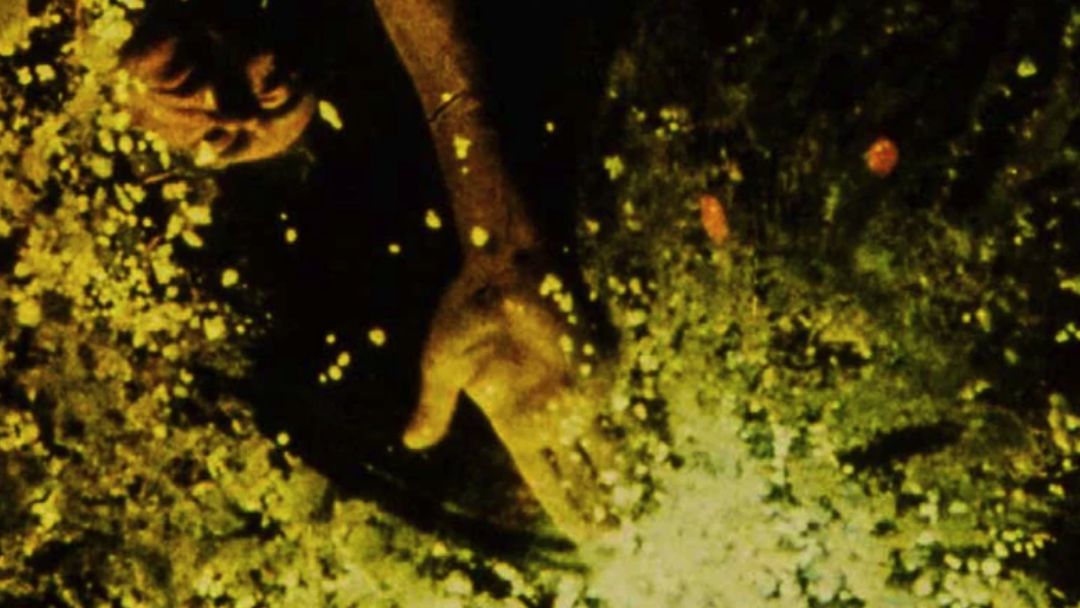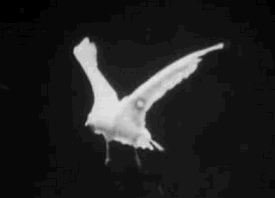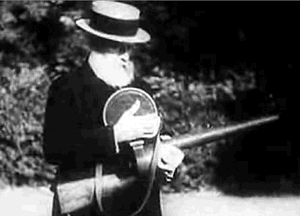“To those who think that all this sounds like science fiction, we point out that yesterday's science fiction is today's fact. The Industrial Revolution has radically altered man's environment and way of life, and it is only to be expected that as technology is increasingly applied to the human body and mind, man himself will be altered as radically as his environment and way of life have been.” Das Netz – Unabomber / LSD / Internet [The Net] (Lutz Dammbeck, 2003)
Apr
27
personal computer mouse – 1981

A mouse in action. Note the stress ball. DPs: James Carman, István Imre & Thomas Plenert.
A computer mouse: the first personal computer mouse debuted on this day in 1981.
– Theodore J. Kaczynski
A Gedankenspiel.
Similar to the way moveable print has accelerated the spread of ideas, the personal computer mouse accelerated the speed of which individualist's ideas can spread. However, like the printing press and unlike the spoken word, the mouse can only point and enhance pre-existing notions, thus neutering any prospect of revolutionary change on an individual level.
In a grotesque snub to nature, the pointing finger has transcended the mouse, detaching our minds from our bodies in one infinite scroll.
science
L'eclisse del 17 aprile [An Eclipse of the Sun] (1912)
Apr
17
1912

Scientists in impeccable suits observing the 1912 solar eclipse. The colour used for tinting this scene, a turquoise, indicates moonlight/dusk. Image source: Cineteca di Bologna (via).
“Antoine Lavoisier (1743-1794) was a French chemist who gave the first accurate scientific explanation of the mysteries of fire. He also provided the law of conservation of matter which states that matter can be neither created or destroyed.n His work and this film are situated between modern chemistry and alchemy. The film stages a drama of abstraction and theoretical realism. Everyday life seen photo-chemically and musically. The film is a materialist projected-image conversion of matter.”To Lavoisier, Who Died in the Reign of Terror (Michael Snow, 1991)
Mar
6
chemistry

Shot from below through a glass pane, a man pushes a sulphur-yellow substance around.
Chemistry: Dimitri Mendeleev presented his version of the periodic table on this date in 1869. He claimed to have had a dream in which he envisioned a table in which all the chemical elements were arranged according to their atomic weight (via).
– Michael Snow, via
The film stock was chemically altered, giving it an dreamlike quality.
“Art and science encounter each other when they seek exactitude.”Escrime [Fencing] (Étienne-Jules Marey, 1890)
Jan
4
revolvers


Footage of Marey at work. Note the mobility of his invention. (via).
A revolver to commemorate Samuel Colt's sale of 1 000 revolvers to butcher Captain Samuel Walker in 1847.
– Étienne-Jules Marey
However, where there is bloodshed, there can be art. Scientist Étienne-Jules Marey studied movement, and further adapted an existing revolver-style camera gun invented by astronomer Jules Janssen in 1874. The revolution in Marey's invention was not in the least in its mobility. Unlike Muybridge, whose locomotion experiments required a huge, cumbersome setup, Marey could strap on his “gun”, and shoot moving footage while following his target around. His chronophotograph Escrime can be considered Marey's first successfully captured moving footage.
Transition de phase dans les cristaux liquides [Liquid Crystals] (Jean Painlevé, 1978)
Feb
28
National Science Day – India

A scene that foreshadows computer-generated imagery. DP: Jean Painlevé.
Filmmaker, photographer and honorary surrealist Jean Painlevé made science films that verge on experimental art cinema. With custom-built camera setups, he explored the world above and below the water surface, and with that exposed human traits.
It's almost impossible to select one film from a filmography as vast as #Painlevé's. In honour of C.V. #Raman, lets go with his Transition de phase dans les cristaux liquides.
It's on Ubu, in case you wonder.